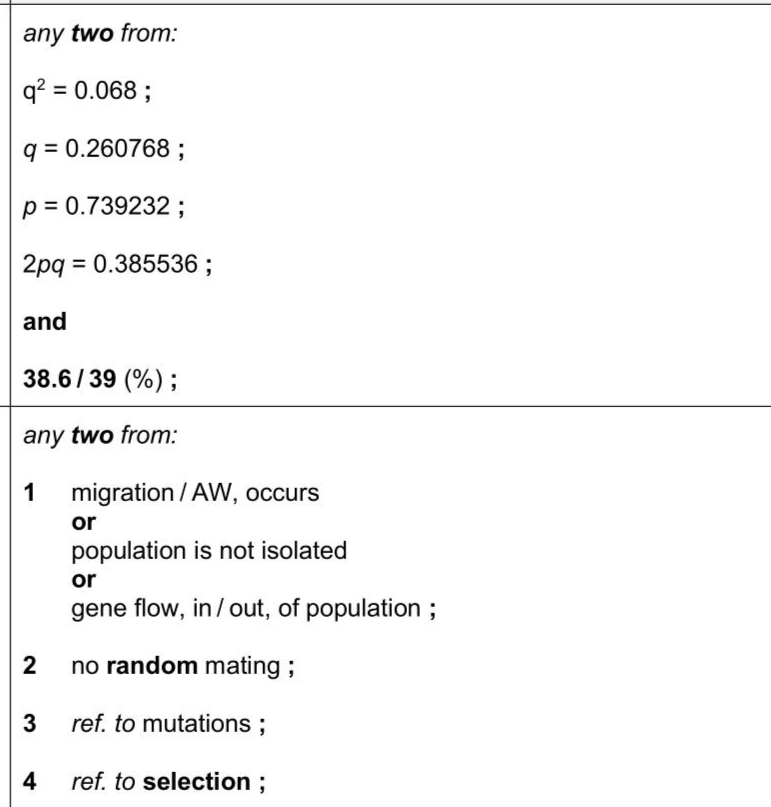The genetics and evolution of the cat family, Felidae, have been studied by scientists. The domestic cat, Felis catus, is a popular pet. Fur length in F. catus is coded for by two alleles, $$\(\mathbf{H}\)$$ and $$\(\mathbf{h}\)$$ : - the allele for short hair, $$\(\mathbf{H}\)$$, is dominant - the allele for long hair, $$\(\mathbf{h}\)$$, is recessive. (i) The population of domestic cats in a city was studied: answer = ..................................................... (ii) Give two reasons why the domestic cat population does not meet the conditions needed to apply the Hardy-Weinberg principle. . . . .
Exam No:9700_s25_qp_44 Year:2025 Question No:3(a)
Answer:

Knowledge points:
17.1.1 explain, with examples, that phenotypic variation is due to genetic factors or environmental factors or a combination of genetic and environmental factors
17.1.2 explain what is meant by discontinuous variation and continuous variation
17.1.3 explain the genetic basis of discontinuous variation and continuous variation
17.1.4 use the t-test to compare the means of two different samples (the formula for the t-test will be provided, as shown in the Mathematical requirements)
17.2.1 explain that natural selection occurs because populations have the capacity to produce many offspring that compete for resources; in the ‘struggle for existence’, individuals that are best adapted are most likely to survive to reproduce and pass on their alleles to the next generation
17.2.2 explain how environmental factors can act as stabilising, disruptive and directional forces of natural selection
17.2.3 explain how selection, the founder effect and genetic drift, including the bottleneck effect, may affect allele frequencies in populations
17.2.4 outline how bacteria become resistant to antibiotics as an example of natural selection
17.2.5 use the Hardy–Weinberg principle to calculate allele and genotype frequencies in populations and state the conditions when this principle can be applied (the two equations for the Hardy–Weinberg principle will be provided, as shown in the Mathematical requirements)
17.2.6 describe the principles of selective breeding (artificial selection)
17.2.7.1 the introduction of disease resistance to varieties of wheat and rice
17.2.7.2 inbreeding and hybridisation to produce vigorous, uniform varieties of maize
17.2.7.3 improving the milk yield of dairy cattle
Solution:
Download APP for more features
1. Tons of answers.
2. Smarter Al tools enhance your learning journey.
IOS
Download
Download
Android
Download
Download
Google Play
Download
Download
